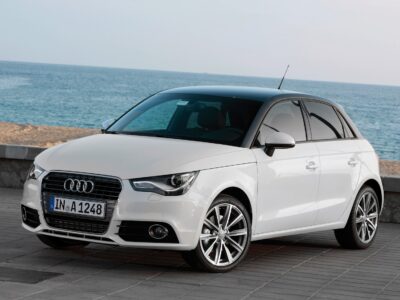
Toyota Yaris Cross Maintenance Costs: Full Service Schedule, Intervals, and What You Actually Pay

- Overview: Toyota Yaris Cross Hybrid Maintenance Cost Advantage
- Yaris Cross Service Intervals Explained
- Toyota Yaris Cross Maintenance Cost Table (0–60,000 km)
- 15,000 km / 1-Year Service (Approx. 130 €)
- 30,000 km / 2-Year Service (Approx. 315 €)
- 45,000 km / 3-Year Service (Approx. 240 €)
- 60,000 km / 4-Year Service (Approx. 450 €)
- Cost Evolution: From Year 1 to Year 4
- Why Hybrid Maintenance Is Cheaper on the Yaris Cross
- Owner Checklist: How to Keep Costs Low Between Services
- Key Takeaways for Yaris Cross Buyers
Overview: Toyota Yaris Cross Hybrid Maintenance Cost Advantage
The Toyota Yaris Cross stands out in the compact SUV segment because it delivers low running costs over time — not just in fuel, but in maintenance. Toyota states that hybrid service costs can be up to 80% lower than equivalent petrol cars and up to 90% lower than diesel cars, which translates into significant lifetime savings for the owner. For many buyers, that’s thousands of euros saved across the first years of ownership. This is especially relevant in daily-use hybrid crossovers like the Yaris Cross, where efficiency and reliability are the core pitch.
What makes the Yaris Cross particularly attractive is that Toyota fixes the official service plan around predictable intervals. You know when you have to go in, what will be done, and roughly how much you’ll pay.
We break down every official service milestone below (15,000 km, 30,000 km, 45,000 km, 60,000 km), including the real contents of each inspection, fluid change, and component check — plus what that means for ownership cost.
Yaris Cross Service Intervals Explained
Scheduled Maintenance Frequency
- Service interval: every 15,000 km or 12 months, whichever comes first.
- This interval applies from new and continues through the life of the car.
- The service schedule is built specifically around hybrid system health, braking system efficiency, and battery cooling.
Why 15,000 km / 1 year matters for resale
A properly stamped service book (with evidence of 15,000 km / yearly checks) protects warranty coverage and supports resale value because hybrid buyers expect proof that the high-voltage system has been inspected regularly.
Toyota Yaris Cross Maintenance Cost Table (0–60,000 km)
| Interval | Time in Service Life | Estimated Cost (€) | Key Operations Included |
|---|---|---|---|
| 15,000 km / 1 year | End of Year 1 | ~130 € | Hybrid system inspection, brake wear check, air filter check, tyre and light inspection, wipers check |
| 30,000 km / 2 years | End of Year 2 | ~315 € | All 15k checks + air filter replacement + HV battery cooling intake filter service + brake fluid change |
| 45,000 km / 3 years | End of Year 3 | ~240 € | Chassis, suspension, steering, joints, transmission inspection + hybrid intake cleaning |
| 60,000 km / 4 years | End of Year 4 | ~450 € | Full hybrid system review, cooling lines/hoses check, pollen filter replacement, automatic transmission review |
These figures represent typical quoted pricing for official scheduled maintenance on a Toyota Yaris Cross Hybrid at each milestone.
15,000 km / 1-Year Service (Approx. 130 €)
What happens at 15,000 km
At the first service, the goal is early-condition assessment. The car is still new, so the emphasis is on inspection rather than replacement. The visit typically includes:
1. Hybrid System Inspection
We request a full diagnostic on the hybrid system. This is not just “does it start?” — it’s a health check of the power control unit, hybrid battery management logic, and associated cooling pathways. Detecting early anomalies here prevents expensive issues later.
2. Brake System Wear Check
Because hybrids regenerate braking energy, physical brake wear can be lower than on a petrol-only crossover of similar size. Still, at 15,000 km the garage measures:
- Pad thickness (front and rear)
- Disc surface condition (glazing, warping, hotspots)
- Brake balance and feel
This stops minor wear from turning into disc replacement.
3. Air Filter Condition Check
The intake air filter condition is reviewed to confirm clean airflow to the combustion engine. A partially clogged filter can raise fuel consumption.
4. Tyres, Lights, and Wipers Inspection
Technicians confirm:
- Tyre tread depth and even wear pattern
- Tyre pressure and valve condition
- Headlights, indicators, DRLs, brake lights fully functional
- Wiper blades, washer function, and screen wash level
This is all about roadworthiness and safety compliance.
Why this first service matters
A clean bill at 15,000 km establishes a maintenance baseline. It also logs hybrid system health early, which helps prove the car has been correctly maintained.
30,000 km / 2-Year Service (Approx. 315 €)
By 30,000 km or Year 2, we shift from “initial check” to “preventative maintenance.” The hybrid is still young, but fluids and filters begin to matter.
Operations at 30,000 km
1. All 15,000 km Inspections
You still get the hybrid diagnostics, brake inspection, tyre and lighting check, etc. That’s standard.
2. Air Filter Replacement
Instead of just inspecting, the engine intake air filter is replaced. A fresh filter protects combustion efficiency and keeps consumption down.
3. High-Voltage Battery Cooling Intake Service
This is crucial on Toyota hybrids. The Yaris Cross uses a high-voltage traction battery that relies on cooling airflow. Over time, lint and dust can partially block the battery’s intake path.
At 30,000 km:
- The filter or mesh at the high-voltage battery air intake is accessed, cleaned, or replaced depending on condition.
- The technician confirms the fan and ducting are unobstructed.
Overheating in the hybrid battery is one of the biggest long-term risks in any hybrid. This step is how Toyota keeps that risk under control at relatively low cost.
You may be interested in reading Vauxhall Corsa Service Schedule: Your Friendly Full Guide
Vauxhall Corsa Service Schedule: Your Friendly Full Guide4. Brake Fluid Replacement
Brake fluid is hygroscopic — it absorbs moisture. Water contamination reduces braking performance and can corrode internal brake components.
At 30,000 km / 2 years, the hydraulic fluid is typically flushed and refilled. This restores pedal feel and keeps the ABS / stability systems working at factory spec.
5. Exhaust System Inspection
The service includes a line-by-line inspection of the exhaust to detect:
- Leaks
- Loose joints or hangers
- Premature corrosion near welds
Small leaks can affect emissions and cause noise issues.
Why the 30,000 km service costs more
You’re now paying for more than inspection. You’re paying for fluid work, intake work, and actual replacement of filters. That’s why the 30,000 km bill is higher than at 15,000 km.
45,000 km / 3-Year Service (Approx. 240 €)
At 45,000 km or Year 3, the objective is structural reliability. The Yaris Cross by this point has lived real life: potholes, curbs, stop-start traffic, long motorway runs. Now we look underneath.
What’s done at 45,000 km
1. Hybrid Battery Intake Cleaning
The intake path for the hybrid battery cooling is cleaned again. Even if no fault codes are present, dust buildup is addressed to protect battery thermal performance.
2. Chassis and Suspension Inspection
The workshop inspects:
- Bushings
- Ball joints
- Tie rods
- Anti-roll bar links
- Dampers and springs
- Front and rear axle mounting points
We’re checking for premature play, knocks, or seepage. This keeps handling tight and prevents uneven tyre wear.
3. Steering Components Check
Free play in steering joints can translate into vague steering feel. Any developing looseness is noted before it becomes an MOT / ITV problem.
4. Transmission and Driveline Visual Check
Even though Toyota’s e-CVT hybrid drive system is known for durability, technicians still look for:
- Seepage or leaks
- Damaged boots on driveshafts
- Early wear in couplings
5. Brake and Safety System Review
Again, pads, discs, hoses, and parking brake mechanisms are checked. On a hybrid SUV that often lives in urban stop-go conditions, this is non-negotiable.
Why the 45,000 km service is cheaper than 30,000 km
Less fluid work, more inspection. You’re paying for expert labour time underneath the vehicle, not a long list of parts. That explains why this visit typically comes in under the 30,000 km cost.
60,000 km / 4-Year Service (Approx. 450 €)
At 60,000 km or Year 4, we enter the “major service” tier. This is the most comprehensive scheduled visit in the early life of a Yaris Cross.
What’s included at 60,000 km
1. Full Hybrid System Review
This is essentially a deep technical health check of the hybrid architecture:
- Power control unit thermal condition
- Hybrid inverter coolant system
- High-voltage cabling integrity
- System insulation, connectors, and housings
- Battery management data (temperature trends, charge behaviour)
The workshop confirms that the hybrid system is performing within Toyota’s expected parameters. This is what protects the headline efficiency that sold most people on the Yaris Cross in the first place.
2. Cooling System and Hose Inspection
Cooling for both combustion and hybrid subsystems is reviewed:
- Hoses, pipes, clamps
- Coolant routing
- Signs of seepage or micro-leaks
Why this matters: a small coolant leak, ignored, becomes an overheating incident. Overheating in hybrids is not a cheap mistake.
3. Pollen Filter Replacement (Cabin Filter)
The cabin / pollen filter is replaced to restore interior air quality and keep HVAC efficiency high. A clogged pollen filter forces the blower motor to work harder and can cause fogging.
You may be interested in reading Vauxhall Corsa Service Schedule: Your Friendly Full Guide
Vauxhall Corsa Service Schedule: Your Friendly Full Guide Skoda Octavia Service Schedule — The Complete Owner’s Guide
Skoda Octavia Service Schedule — The Complete Owner’s Guide4. Automatic Transmission / e-CVT Inspection
Toyota’s hybrid drive uses an e-CVT style transmission that blends electric and petrol power. At 60,000 km the transmission unit is inspected for:
- Fluid condition (if applicable under local service policy)
- External leaks
- Abnormal noises
- Mount integrity
This step protects drivetrain refinement, which is a selling point of the Yaris Cross in traffic.
5. Global Safety and Roadworthiness Check
Lights, tyres, wipers, brakes, steering, underbody protection, exhaust, suspension: this is the “full picture” check before the car exits warranty age and starts transitioning into mature ownership.
Why 60,000 km is the most expensive early service
This visit bundles:
- Hybrid electronics review
- Cooling and thermal management checks
- Comfort and air quality maintenance
- Transmission inspection
You’re paying for a complete systems audit, not just consumables.
Cost Evolution: From Year 1 to Year 4
Let’s look at the financial arc across the first 60,000 km:
- Year 1 / 15,000 km: ~130 €
- Year 2 / 30,000 km: ~315 €
- Year 3 / 45,000 km: ~240 €
- Year 4 / 60,000 km: ~450 €
Over four years (up to 60,000 km), this lands in the low four figures total. That’s extremely competitive for a B-segment hybrid SUV, and it’s one reason the Yaris Cross is often marketed as offering several thousand euros of potential ownership savings over rivals in the same use case.
Why Hybrid Maintenance Is Cheaper on the Yaris Cross
1. Fewer Wear Items Than a Diesel
There’s no traditional diesel particulate filter (DPF) to service, no SCR AdBlue system to refill, and fewer high-pressure diesel injection components vulnerable to expensive failures. Those are common long-term cost drivers in small diesel crossovers.
2. Reduced Brake Wear
The regenerative braking system slows the car using the electric motor, capturing energy and feeding it back into the hybrid battery. Result:
- Pads last longer.
- Discs last longer.
- Brake dust is reduced.
Longer brake life = fewer unplanned bills.
3. Managed Battery Cooling
Toyota actively maintains the high-voltage battery’s cooling intake. That’s in the schedule. A well-cooled hybrid battery sustains performance, which delays expensive high-voltage battery intervention.
4. Predictable, Fixed-Interval Work
Because the Yaris Cross follows a 15,000 km / yearly rhythm, it avoids the random “surprise” maintenance events that some turbo-petrol and diesel owners get hit with (turbo oil coking, EGR valve cleaning, DPF regeneration issues, etc.).
Owner Checklist: How to Keep Costs Low Between Services
To keep the Yaris Cross operating at its best and avoid paying more than necessary at each interval, we recommend the following habits:
1. Monitor Tyre Pressure Monthly
- Underinflated tyres increase rolling resistance.
- That forces the petrol engine to work harder, which raises consumption.
- It also causes uneven outer-edge tyre wear, which shortens tyre life and leads to early replacement.
2. Keep the High-Voltage Battery Intake Clear
Most Toyota hybrids have an intake vent (often near the rear seats or boot area) that feeds cooling air to the hybrid battery. Avoid blocking it with bags, jackets, pet blankets, etc. Restricted airflow = higher temps = stress on the battery fan.
3. Listen for Brake Feel Changes
Hybrid brakes should feel consistent and progressive.
If the pedal suddenly feels spongy or you notice pull under braking, don’t wait for the next milestone — get it checked, especially if you’re approaching the 30,000 km brake fluid change.
4. Replace Wipers Early, Not Late
Poor wipe pattern = poor visibility = safety risk. Wipers are cheap. Save yourself the drama.
5. Document Every Service Stamp
Keep every invoice and checklist. It proves that:
- Hybrid system health has been verified.
- Cooling and brake systems have been maintained.
- No warning signs were ignored.
Strong documentation protects resale value.
You may be interested in reading Vauxhall Corsa Service Schedule: Your Friendly Full Guide
Vauxhall Corsa Service Schedule: Your Friendly Full Guide Skoda Octavia Service Schedule — The Complete Owner’s Guide
Skoda Octavia Service Schedule — The Complete Owner’s Guide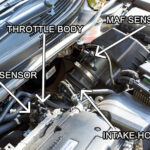 Renault Clio Injection System Check & Maintenance (Complete, Practical Guide)
Renault Clio Injection System Check & Maintenance (Complete, Practical Guide)Key Takeaways for Yaris Cross Buyers
- The Toyota Yaris Cross hybrid uses a strict 15,000 km / 1-year service interval.
- The first four major checkpoints (15k, 30k, 45k, 60k) cost roughly 130 €, 315 €, 240 €, and 450 €.
- Year 2 is when you start seeing real fluid and filter changes, including brake fluid and hybrid battery intake service.
- Year 4 is the “big one,” focusing on hybrid system integrity, cooling circuits, cabin filtration, and transmission condition.
- Across 60,000 km, total scheduled maintenance spend is designed to stay low for a hybrid SUV, supporting Toyota’s claim of notable savings versus petrol and diesel alternatives.
In short: predictable service intervals, known prices, and hybrid-focused inspections make the Yaris Cross appealing if you want an efficient compact SUV with controlled long-term ownership cost.
If you want to know other articles similar to Toyota Yaris Cross Maintenance Costs: Full Service Schedule, Intervals, and What You Actually Pay you can visit the category Maintenance.
Deja una respuesta

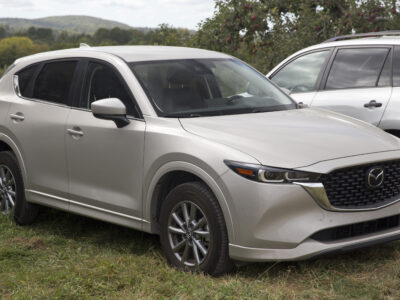


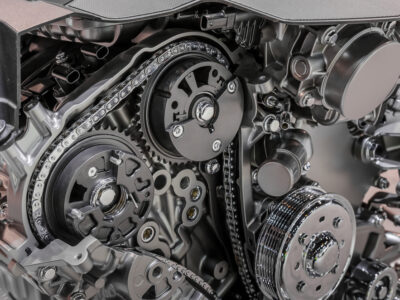
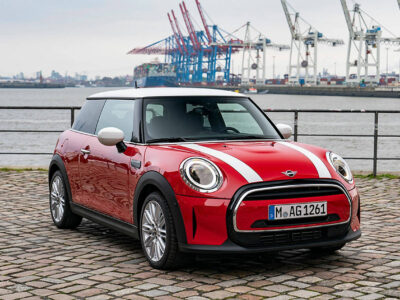
More content of your interest